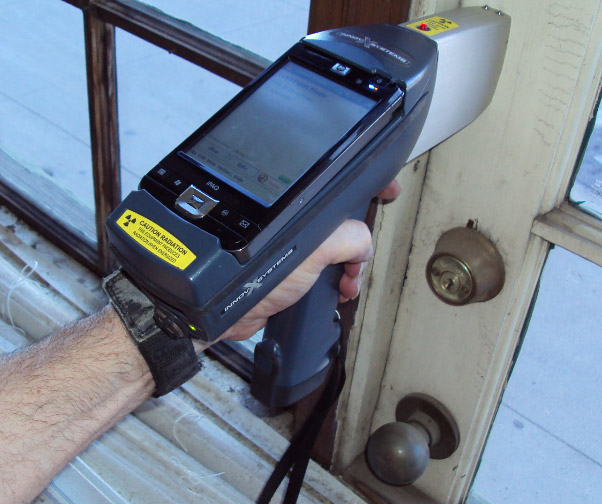Important Tools and Strategies for Reliable Lead Offense Cleaning
Resolving lead offenses successfully requires an extensive method that blends the right devices with strategic methods. The primary step involves gearing up workers with Personal Safety Tools (PPE) to secure their health and wellness. Concurrently, using specialized cleaning devices, such as HEPA vacuums and lead-specific cleansing representatives, is necessary for complete pollutant elimination. Efficient control techniques, including plastic bed linen and unfavorable air pressure systems, are essential to prevent the spread of harmful materials. Safe disposal techniques and strict adherence to governing guidelines make certain accountable handling of poisonous waste. What are the nuanced strategies that absolutely make a difference?
Individual Safety Equipment
Personal protective devices (PPE) is an essential component in the reliable administration of lead contamination cleaning. PPE serves as an important obstacle, securing employees from the dangerous impacts of lead direct exposure, which can cause extreme wellness effects. The essential PPE for lead cleanup consists of respirators, protective clothing, gloves, and eye protection. Each sort of equipment is specifically made to alleviate different risks connected with lead particles and dirt.
Respirators, especially those furnished with HEPA filters, are essential for filtering system airborne lead particles, stopping inhalation. Safety clothing, consisting of coveralls and disposable matches, avoids lead dirt from adhering to employees' garments, decreasing the threat of additional contamination.
Moreover, strenuous training on the appropriate use and maintenance of PPE is necessary. Workers need to be educated on putting on and doffing treatments to prevent contamination. Normal evaluations and substitutes of PPE components are required to maintain their protective capacities, guaranteeing a secure and compliant clean-up procedure.
Specialized Clean-up Devices

Another necessary tool is the wet/dry vacuum, which can successfully cleanse up both dust and liquid pollutants. These vacuum cleaners often include HEPA filters to supply an additional layer of safety. Wet wipes or tack towels are likewise important for surface area cleaning; they are especially developed to catch and hold lead fragments, reducing the risk of spreading contamination.
For even more persistent deposits, specialized lead-removal cleaner are called for. These representatives are created to damage down lead particles, making them simpler to get rid of. Scrub brushes with sturdy bristles can aid in this process, particularly on rough surfaces where lead dust has a tendency to adhere extra highly.
In addition, encapsulants are made use of to secure lead-contaminated surface areas, protecting against the launch of lead dust. These specialized paints and layers are designed to stick to numerous substratums, giving a lasting remedy for lead control.
Effective Containment Methods
Reliable control techniques are essential in mitigating the spread of lead contamination throughout cleanup tasks. Carrying out robust containment techniques ensures that lead fragments do not migrate to untouched areas, therefore securing both workers and the environment (DOH & HPD Lead Violation Removal NYC).

To boost containment, encapsulants can additional reading be put on surface areas that are not being removed or disrupted. These specialized coatings bind lead dirt, decreasing its availability for resuspension. Furthermore, all personnel need to wear proper Personal Safety Equipment (PPE), consisting of respirators and disposable fits, to stop contamination spread.
Safe Disposal Practices
Ensuring risk-free disposal techniques is a crucial element in the administration of lead contamination cleaning. Correct disposal reduces the danger of lead re-entering the atmosphere and jeopardizing public wellness (DOH & HPD Lead Violation Removal NYC).
Transporting lead waste requires adherence to stringent guidelines. Utilizing licensed contaminated materials carriers guarantees that the materials are dealt with properly. Paperwork, consisting of materializes describing the kind and amount of waste, need to accompany deliveries to track the waste from the website of beginning to its last disposal location.
Designated contaminated materials disposal facilities are equipped to handle lead-contaminated materials securely. These centers usually use innovative approaches such as stablizing, solidification, or chemical therapy to reduce the effects of the lead before disposal. Landfilling in specialized, lined areas that prevent leachate from contaminating groundwater is an usual technique for last disposal.
Routine training for personnel involved in lead garbage disposal is vital to preserve security requirements and stop unintentional exposure. By sticking to these techniques, companies can substantially lower the environmental and health influences connected with lead contamination.
Regulatory Compliance Tips

Sticking to governing compliance is paramount in the effective execution of lead contamination cleaning. Comprehending and click this site following government, state, and local guidelines makes sure not only the safety and security and health and wellness of people however additionally Find Out More the legal and economic well-being of the cleanup organization. The Environmental Defense Agency (EPA) establishes stringent requirements, such as the Lead Renovation, Repair Service, and Paint (RRP) Regulation, which mandates appropriate certification and training for specialists handling lead-based activities.
Compliance starts with a comprehensive evaluation of relevant laws and policies. Organizations should remain upgraded on any kind of legal adjustments, which can be helped with with routine training sessions and registering for sector updates. Documents is another critical compliance element; preserving in-depth documents of all tasks, consisting of assessment records, staff member training logs, and disposal shows up, is necessary.
In addition, involving with licensed lead assessors or take the chance of assessors makes certain that lead threats are appropriately recognized and minimized. Companies have to apply making use of Individual Protective Equipment (PPE) and ensure that safety protocols are purely adhered to. Finally, transparent communication with stakeholders, including staff members, customers, and regulative bodies, will foster a society of conformity and liability, ultimately adding to a much safer and more efficient lead cleaning procedure.
Final Thought
Efficient lead infraction cleaning necessitates the combination of specialized devices and strategic approaches to ensure safety and effectiveness. Individual safety equipment (PPE) safeguards workers from direct exposure, while secure disposal techniques and strict adherence to regulative conformity are crucial for responsibly handling harmful waste.